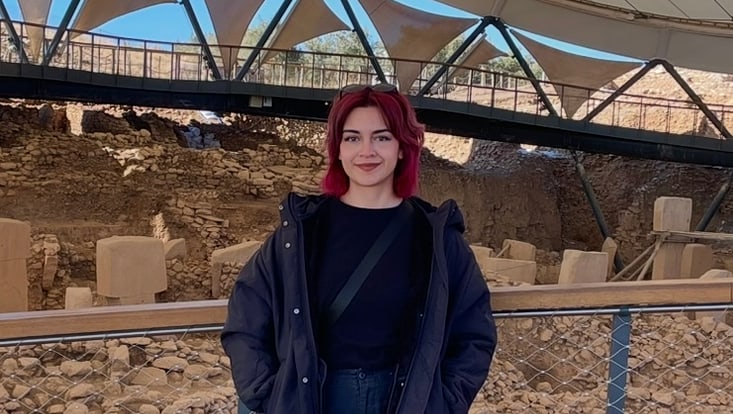CLIMATE AND EARTH
SYSTEM SCIENCES
Photo: UHH/Denstorf
14 July 2025

Photo: privat
Irmak Gök has completed her master’s thesis, “Spatial and Temporal Variability of Methane Concentration in the Elbe River and Estuary”, under the supervision of Prof. Lars Kutzbach and Dr. Kirstin Dähnke. The research was carried out as a collaboration between the University of Hamburg and Helmholtz-Zentrum Hereon.
Her study set out to better understand methane (CH₄) dynamics in the Elbe River and its estuary—a system heavily shaped by human activity. To achieve this, she conducted a dual sampling campaign in summer 2024: a temporal study downstream of the Geesthacht weir from mid-July to early October, and a spatial survey of the estuary in August. Alongside CH₄ measurements, she collected environmental and biological data, including chlorophyll a, oxygen, nutrient levels, and turbidity.
The results revealed that summer conditions promoted high primary production, which, in combination with long water residence times, led to CH₄ accumulation until mid-September. A major flood event on 20 September disrupted these conditions, flushing CH₄ downstream and introducing additional nutrient loads from upstream.
In the estuary, CH₄ concentrations were highest at the freshwater entry point and declined along the Hamburg harbor. Gök also identified a freshwater turbidity maximum downstream of the harbor with higher turbidity levels than the well-known estuarine turbidity maximum. This phenomenon appears to be driven by human-induced sediment transport.
Her findings highlight the importance of integrating both temporal and spatial monitoring to fully understand CH₄ dynamics in rivers impacted by human activities.